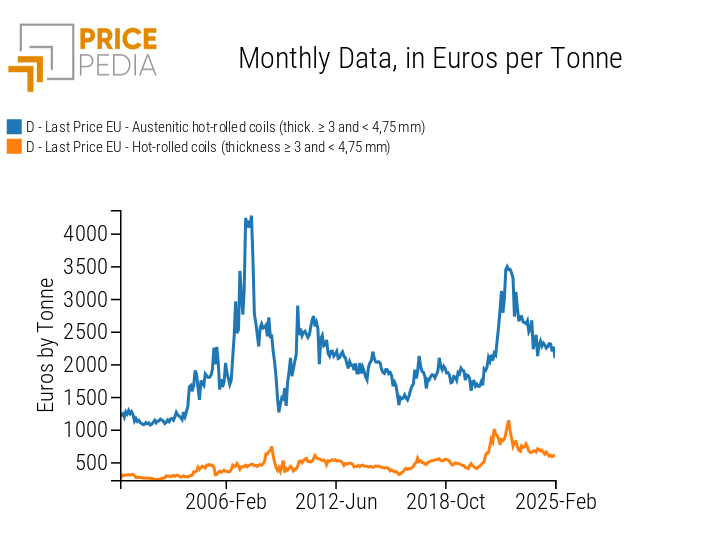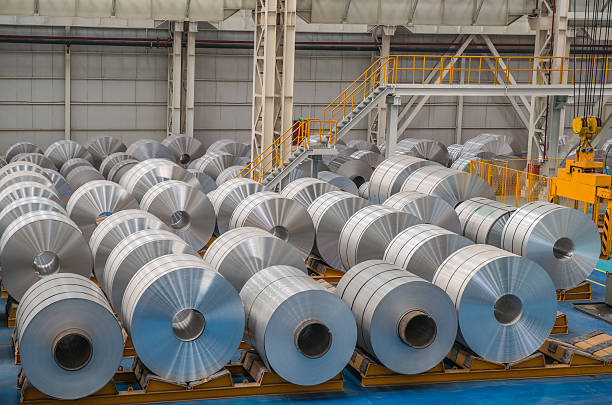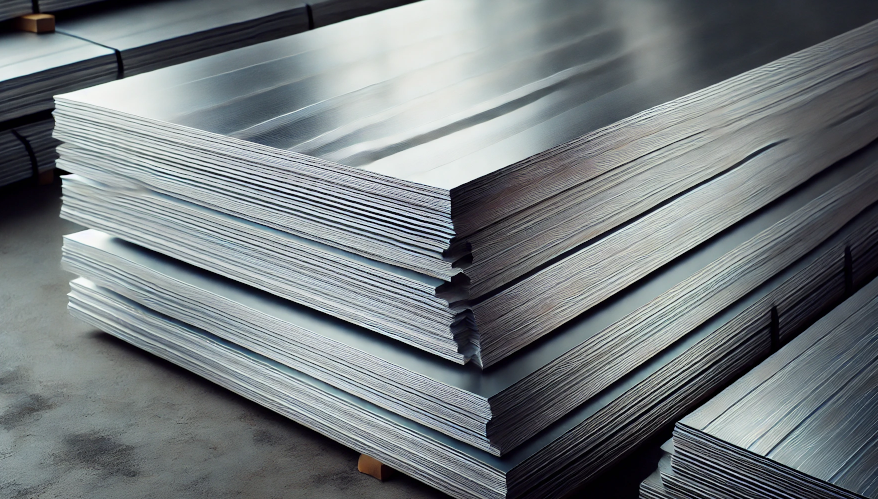Cost pass-through of hot-rolled austenitic coil prices
The importance of extra-alloy AISI 304 in determining the prices of austenitic coils
Published by Luca Sazzini. .
Ferrous Metals Stainless Steel Cost pass-throughAustenitic stainless steel is a metallic alloy composed of iron, chromium, and nickel, with a nickel content that can range from 6% up to more than 20%.[1] The high nickel content, combined with chromium, gives the alloy strong resistance to corrosion, making it ideal for applications requiring durability and resistance to chemical agents. Due to these properties, austenitic stainless steel is widely used in machinery and plants for the chemical and food industries, where it is employed for its resistance to acids and saline solutions.
The price dynamics of hot-rolled austenitic coils are primarily influenced by the extra-alloy components used in production,[1] which leads to distinct price levels and dynamics compared to those of hot-rolled carbon coils.
The following graph shows a comparison between the prices of austenitic coils and carbon coils, both with a thickness between 3 and 4.75 mm.
Comparison between the prices of austenitic and carbon hot-rolled coils

From the analysis of the graph, significant differences emerge in both the price levels and, especially, the price dynamics between the two types of coils. The prices of austenitic coils exceed those of carbon coils by more than three times, with peaks, such as in 2007, where they reached more than nine times the value of carbon coils.
During the 2006-2007 period, the prices of austenitic coils, unlike those of carbon coils, saw a sudden rise due to the surge in nickel prices, driven by the sharp increase in Chinese demand. However, following the global financial crisis, whose effects began to be felt towards the end of 2007, there was a collapse in nickel demand, which led to an oversupply and caused a significant drop in both nickel and austenitic coil prices.[2]
This article will analyze the cost pass-through of the prices of hot-rolled austenitic coils, examining how changes in input prices affect the price of austenitic coils.
Regression Model
The regression model used in this analysis is a simplified model entirely based on production costs.
The dependent variable in the model is the Principal Component (PCA) of the prices of austenitic coils of different thicknesses. This variable was created to capture the price levels and dynamics common to all types of austenitic coils in a single variable.
The explanatory variables used as regressors are:
- the electric furnace steel charge cost index: which includes both the price of steel scrap and the price of electricity used in the melting process;
- the price of extra-alloy AISI 304: which includes the price of chromium and nickel, used as extra-alloy components in the production of austenitic steels.
Both explanatory variables were lagged to account for the temporal effect of changes in input costs on the price of austenitic coils, as these impacts tend to manifest after a certain time period.
Furthermore, in order to interpret the estimation results in terms of elasticity, a logarithmic transformation was applied to all the variables.
The regression model chosen for this analysis is the Engle and Granger model, which estimates the dynamic specification in two distinct phases. In the first phase, an OLS regression is performed to determine the long-term structural relationship between the variables considered. In the second phase, an error correction model is applied to analyze the short-term adjustment process of the variables toward the theoretical reference values identified by the long-term estimation results.
Long-term Regression
The following table shows the long-term estimation results for the prices of hot-rolled austenitic coils.
Long-term estimation results for the prices of hot-rolled austenitic coils
| Variable | Coef | Delay | P-value | Lim inf | Lim sup | |
|---|---|---|---|---|---|---|
| Intercept | 1.148 | 0.000 | 0.994 | 1.302 | ||
| Steel charge | 0.249 | 2 | 0.000 | 0.152 | 0.346 | |
| Extra-alloy AISI 304 | 0.483 | 1 | 0.000 | 0.396 | 0.57 | |
| Adjusted R²: 0.945 | ||||||
All long-term coefficients are consistent with theoretical expectations and are statistically significantly different from zero.
The cost pass-through estimate for the extra-alloy component is 0.48, almost double that of the steel charge (0.25). This indicates that the price of austenitic coils is predominantly influenced by the dynamics of the extra-alloy components rather than the other production costs.
Do you want to stay up-to-date on commodity market trends?
Sign up for PricePedia newsletter: it's free!
Short-term Regression
The following table presents the short-term estimation results from the error correction model (ECM), which estimates the adjustment processes of the variables toward the “theoretical” long-term values.
Short-term estimation results for the prices of hot-rolled austenitic coils
| Variable | Coef | P-value | Lim inf | Lim sup | ||
|---|---|---|---|---|---|---|
| Intercept | 0.001 | 0.775 | -0.007 | 0.009 | ||
| Shock | 0.593 | 0.000 | 0.358 | 0.828 | ||
| Adjustment coefficient | -0.398 | 0.000 | -0.558 | -0.237 | ||
| Adjusted R²: 0.269 | ||||||
The shock variable coefficient indicates that 59% of the price changes in the determinants are immediately transferred to the price of austenitic coils.
The adjustment coefficient estimate is -0.40, meaning that 40% of the difference from the previously estimated long-term equilibrium is corrected in each period.
Conclusions
From the estimation results, it emerges that the dynamics of austenitic coils are predominantly dependent on their extra-alloy component. In particular, the overall cost pass-through for chromium and nickel is estimated at 0.48. This means that, ceteris paribus, a 10% increase (decrease) in extra-alloy prices leads, on average, to a 4.8% increase (decrease) in the price of hot-rolled austenitic coils.
The goodness-of-fit coefficient (Adjusted R2) for the long-term equation is 0.95, out of a maximum of 1. This highlights the model's ability to capture the long-term price dynamics of hot-rolled austenitic coils.
[1] See the article: Different trends for stainless steel prices.
[2] A summary of the nickel price dynamics was described in the article: Criticality of nickel for European industry.


